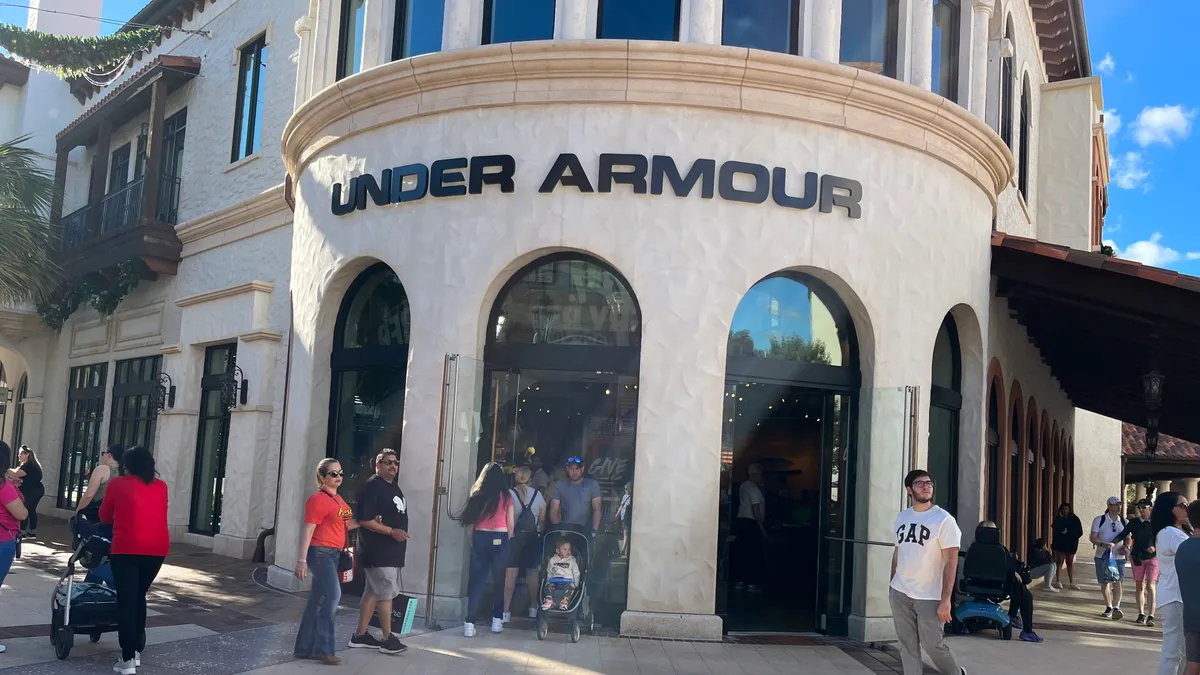Dive Brief:
- As Under Armour prepares to change leadership this month, interim CEO Colin Browne on Wednesday praised incoming chief Stephanie Linnartz as an “amazing executive” and said she would bring “a breath of fresh air” to Under Armour’s business.
- The brand in Q3 recorded 3% revenue growth, reaching $1.6 billion, according to a company press release. Wholesale revenue (about 53% of Under Armour’s net sales) was up 7%, while direct-to-consumer sales fell 1% thanks to owned store declines.
- Inventory was up 50% in the quarter, reaching $1.2 billion. Executives stressed that while inventory is bloated, most of the product is current and Under Armour plans to pack and hold some of it until next year.
Dive Insight:
Building on a promise in November to pivot to more lifestyle products, Under Armour executives on Wednesday talked extensively about the brand’s new “live” category and the opportunities it opens up for the business.
The more casual offering could triple Under Armour’s total addressable market, Browne stressed, and it also offers Under Armour a chance to potentially partner with a new group of wholesalers. The athleisure-esque product line, which plays in a space Under Armour’s competitors have invested in for years, puts style first and performance second.
To showcase its lifestyle positioning, Under Armour is opening a pop-up in the Flatiron District of New York next week, which will not only show customers how its products can be worn for everyday uses but also represents a different approach to retail for Under Armour.
“We continue to invest in building out our own DTC and that’s a key focus for us,” Browne said. The store in New York is an important piece of that strategy, Browne said, as it represents how Under Armour wants to present its brand moving forward.
Pivoting the brand is an important step — and one that incoming chief Linnartz will surely help tackle when she joins later this month — but Under Armour’s competitors have a leg up on it at the moment, according to GlobalData Managing Director Neil Saunders.
“The problem here is one of brand relevance and loyalty. In our view, while Under Armour’s brand is certainly not terrible, it still lacks the clarity and desirability of stronger brands like Lululemon,” Saunders said in emailed comments. “During difficult times, this makes it easier for consumers to avoid buying it or to switch to cheaper alternatives. The company has already corrected some of the worst missteps and is still refining the brand and how it goes to market, but we feel more effort is needed during these more constrained times.”













